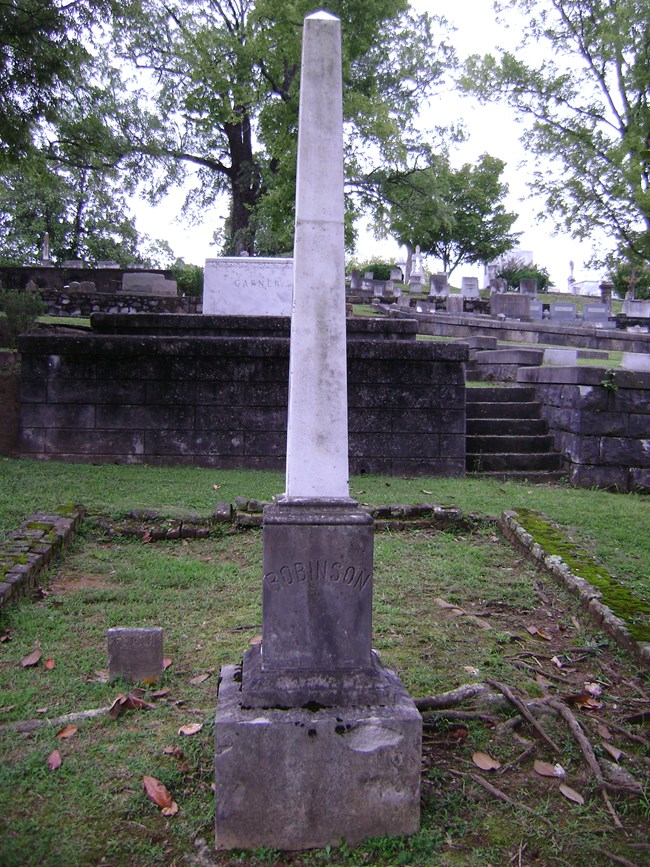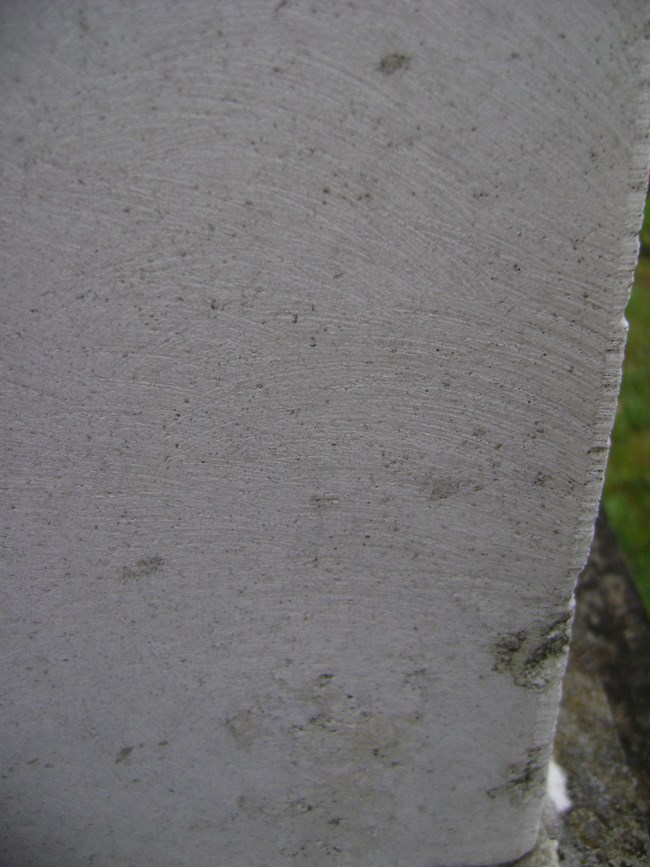Last updated: April 7, 2025
Article
Abrasive Cleaning of Grave Markers

Jason Church, National Park Service
At NCPTT we get a lot of calls and e-mails concerning cemetery care and preservation. A question came in from Linda Ellis from Lyndhurst, Ohio. I decided to post her question and our response because lots of people may have the same question.
"I am writing to inquire if you have ever studied the effects of using a Nyalox nylon brush attached to a power drill type tool on the surface of a gravestone?"
NCPTT has spent the last eighteen years working in cemeteries and developing sensitive cleaning methods for grave stones. Researchers and conservators at the Center have approached conservation of cemeteries with the utmost care. Since 2003, we have worked with cemeteries across the country and have applied professional standards such as the Secretary of Interior’s Standards for Historic Preservation and the American Institute for Conservation’s Code of Ethics and Guidelines for Practice. NCPTT has held annual cemetery preservation workshops, has created videos documenting cemetery care, and has published research on cleaning grave markers, (see Best Practice Recommendations for Cleaning Government Issued Headstones.)

Jason Church, National Park Service
Our number one principle for cleaning grave markers is "Do No Harm." This means that we think about the long term as well as short term effects on the material. We have documented damage from power washers and power tools that have been incorrectly used in historic cemeteries. We have conducted research on the effects of surface texture on deposition of pollutants on marble and limestone (See: “Characterization of Carbonate Stone Surface Morphology and its Effect on Surface Uptake of SO2,” 9th International Congress on Deterioration and Conservation of Stone, Venice, Italy, June 19-24, 2000, Elsevier, pp. 303-312.). When stone surfaces are roughened, they can capture and hold more pollutants, moisture, and microbes. This may lead to greater soiling in the future and an accelerated rate of deterioration.
Our research into pollution deposition on marble and limestone shows that there is chemical attack along the grain boundaries of the stone. This type of weathering leads to dissolution of the “glue” that holds the grains of stone together. As the weathering progresses, the grains loosen and become “sugary.” You can wipe your hand across a weathered headstone and see granules on your fingertips.

Jason Church, National Park Service
Biological factors can cause damage to stone as well. NCPTT funded research at Harvard University shows that fungal spores can penetrate the weathered surface of stone and carry microbes into the stone. These microbes can feed on the calcium and release acidic byproducts as a waste product which weakens the stone. Biocidal cleaners are recommended to minimize biological damage.
NCPTT does not advocate the use of power tools to clean headstones. The use of such tools can abrade and remove granules from weathered marble and limestone. We do not advocate grinding, re-lettering, or polishing headstones as this alters the original surface of the grave marker. The company that makes Nyalox brushes compares their performance to wire brushes, which are much too harsh for a stone surface. Would you use a Nyalox brush on a power drill to clean the surface of your automobile? If not, then you would not use it to clean a grave marker.
